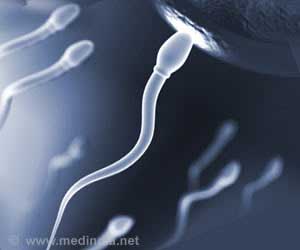Fertility rates among Indian women dropped from 2.3 to 1.9 as per the National Family Health Survey-5. The rate is lower among urban and educated women compared to rural.
- Between National Family Health Survey 4 and the more recent 5, the Total Fertility Rate of India fell further from 2.18 to 1.99
- Only 5 states namely Bihar, Meghalaya, Uttar Pradesh, Jharkhand, and Manipur have Total Fertility Rate or TFR above 2.1
- The highest fertility rates were recorded in Bihar and Meghalaya and the lowest in Sikkim and the Andaman and Nicobar Islands
Read More..
Fertility Rate of India Recorded by NFHS-5 Survey
The National Family Health Survey 2019–21 (NFHS–5), offers data on India’s population, its health, and nutritional status of each state and union territory(1✔ ✔Trusted SourceNational Family Health Survey (NFHS-5)
Go to source). One aspect to look at is the Total Fertility Rate(TFR) of Indian women in the recently published report is that, between the age group of 15-49 years, the recorded rate was 1.99, which is below the rate of 2.18 in the NFHS-4. TFR among urban women was found to be 1.63 and among rural women to be 2.14. In rural areas, the TFR has considerably dropped from 3.7 children per woman in 1992-93.
In urban areas the rates had dropped from 2.7 children in 1992-93.
Only five states namely Bihar (2.98), Meghalaya (2.91), Uttar Pradesh (2.35), Jharkhand (2.26), and Manipur (2.17) have fertility rates that are higher than the replacement rate (2.1).
Replacement level of the total fertility rate is the average number of children born to a woman during the period when a population is exactly replacing itself from one generation to the next without any migration.
The total fertility rate of the nation has decreased across all the religious communities, but the Muslims have had the largest decline, from 4.4 in NFHS 1 to 2.3 in NFHS 5.
Among the religious communities, the Muslims have had the greatest decline in fertility rate during the past 20 years. The community's fertility rate decreased from 2.6 in 2015–16 and in just a few years it fell by 0.3 maintaining the long-term downward trend. But still, the Muslim population continues to have the greatest fertility rate compared with other religious groups.
As recorded by the NFHS 5, the fertility rate of the Hindus was 1.94, followed by the Christians at 1.88, the Sikh and the Jain community at 1.6, and the lowest among the Buddhist and neo-Buddhist groups at 1.39.
As the women’s educational levels increased, their number of children decreased. Women who did not have any school education had about 2.8 children, whereas women with an education at school level had an average of 1.8 children(1✔ ✔Trusted Source
National Family Health Survey (NFHS-5)
Go to source,2✔ ✔Trusted Source
National Family Health Survey 5
Go to source).
About the National Family Health Survey 2019–21 (NFHS–5)
The National Family Health Survey 2019–21 (NFHS–5), offers data on India’s population, its health, and nutritional status of each state/union territory(1✔ ✔Trusted SourceNational Family Health Survey (NFHS-5)
Go to source).
By including new dimensions like death registration, pre-school education, expanded child immunisation domains, components of micronutrients for children, menstrual hygiene, frequency of alcohol and tobacco use, additional components of Non-Communicable Diseases (NCDs), and an expanded age range for measuring hypertension and diabetes among all aged 15 years and above, the scope of NFHS-5 is expanded in comparison to the earlier round of the survey (NFHS-4).
Need of the Hour
Health executives have frequently remarked that no government in the world could build schools and other facilities at the rate of the approximately 25 million babies being born each year in India. The health administration has spent years attempting to stabilize the situation, and it appears that time has finally come (3✔ ✔Trusted SourceWhat the fertility rate decline means for India
Go to source). The need of the hour is to do more and the following action points can help:
- Government should continue to prioritize educating girls in general. According to experts educating a girl invariably improves her family's general well-being.
- Adults also need to be educated about family planning and reproductive health, and they need to be encouraged to use safe family planning methods.
- Education increases the sense of awareness and wellbeing in young people, particularly in girls, which deters early pregnancy and marriage.
Is the Drop in Total Fertility Rate a Cause of Concern?
Over the last 70 years, there has been a 50% decline in fertility rates worldwide and the reasons have been women's empowerment with education, lower child mortality and the increasing cost of living. The combination of lower fertility rates along with increasing life expectancies around the world, is creating an aging population. Overall this puts pressure on the healthcare systems of the countries(4✔ ✔Trusted SourceThe Effect of Fertility Reduction on Economic Growth
Go to source).
Public health professionals are pausing to process this information from India because it shows that the population is stabilizing. Certain states are edging upward, while others are primarily heading downward, and the trend is towards equilibrium.
A number of variables, including improved contraception measures and government health and family welfare programmes, are responsible for the decline in fertility.
Like China, India too should see the population declining in the coming decades to its current peak of about 1.4 billion. This will mean that India’s demographic dividend will last for another two to three decades and after that it will have to cope with the aging population and slowing down of economic growth like some of the other developed countries. So India has another 25 years or so to become a super economic power house.
References:
- National Family Health Survey (NFHS-5) - (http://rchiips.org/nfhs/NFHS-5Reports/NFHS-5_INDIA_REPORT.pdf)
- National Family Health Survey 5 - (https://prsindia.org/policy/vital-stats/national-family-health-survey-5)
- What the fertility rate decline means for India - (https://www.thehindubusinessline.com/blexplainer/what-the-fertility-rate-decline-means-for-india/article37996061.ece)
- The Effect of Fertility Reduction on Economic Growth - (https://www.ncbi.nlm.nih.gov/pmc/articles/PMC4267474/)
















